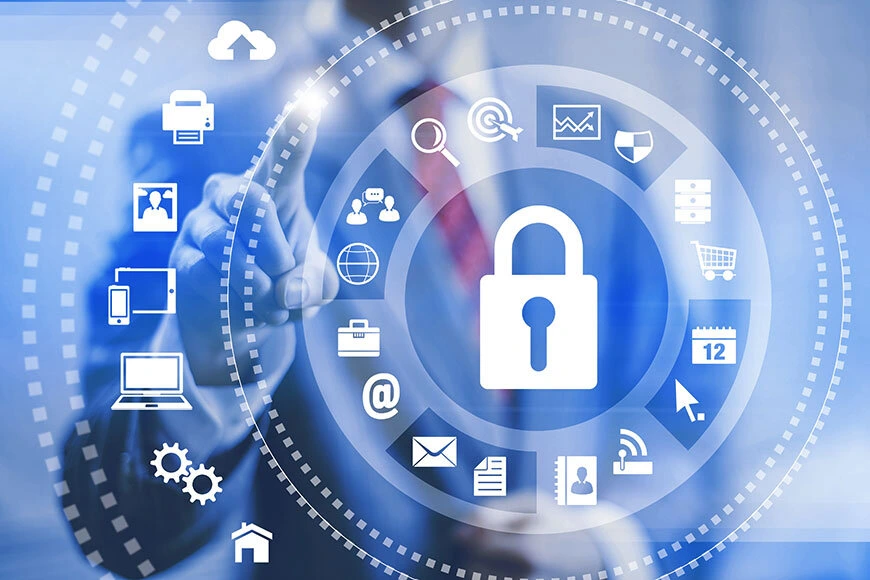Cybersecurity Audit Best Practices
In today’s fast-evolving digital landscape, cybersecurity has become a critical aspect for organizations to ensure the safety and security of their systems, data, and networks. With the rise in the number and complexity of cyber threats, it has become essential for organizations to take proactive measures to strengthen their security posture. One such measure is conducting regular cybersecurity audits. A cybersecurity audit is a comprehensive assessment of an organization’s security controls, policies, and procedures to identify vulnerabilities and ensure compliance with industry standards and regulations. Consult with Cybersecurity Audit experts for effective and reliable cybersecurity audits for your business.
This blog post discusses the best practices for conducting a cybersecurity audit, including what areas to focus on and how to identify potential vulnerabilities.
7 Best Practices for Cybersecurity Audit
Stay Updated with Industry Standards and Regulations
In today’s digital age, cybersecurity is critical to any organization’s operations. Regular cybersecurity audits can help identify vulnerabilities and ensure appropriate measures are in place to protect sensitive information. One best practice for conducting effective cybersecurity audits is to stay updated with industry standards and regulations.
This includes keeping up-to-date with the latest security protocols and best practices and playing with relevant regulations such as GDPR or HIPAA. By staying informed, organizations can ensure that their cybersecurity measures are robust and effective, helping to safeguard against cyber threats and protect sensitive data.
Assess Network Security
When conducting a cybersecurity audit, it is essential to assess network security to identify and address all potential threats. This involves examining the various components of the network, including firewalls, routers, and switches, as well as any connected devices such as servers and workstations. This assessment aims to identify any vulnerabilities in the network that cyber attackers could exploit.
Once these vulnerabilities have been identified, appropriate measures can be taken to strengthen the network’s security posture. Best practices for assessing network security include using vulnerability scanners and penetration testing tools, reviewing access control policies and procedures, and ensuring that all software and firmware are up-to-date with the latest patches and security updates. By following these best practices, organizations can help protect their networks from cyber attacks and safeguard sensitive data from unauthorized access or theft.
Create a List of Security Personnel and Their Responsibilities
Performing a cybersecurity audit can be daunting, but it is essential for protecting your organization from potential cyber threats. Creating a list of security personnel and their responsibilities is necessary to ensure that your audit is thorough and effective. This will help ensure that all aspects of your organization’s security are accounted for and that everyone knows their role in maintaining a secure environment.
When creating this list, it is essential to include key personnel such as the Chief Information Security Officer (CISO), IT staff, and any other individuals who play a role in your organization’s security protocols. Each person should have clearly defined responsibilities that align with their expertise and job functions. For example, the CISO may oversee the entire audit process, while the IT staff may implement software updates and monitor network activity.
By creating a comprehensive list of security personnel and their responsibilities, you can ensure that all aspects of your organization’s cybersecurity are being addressed and that everyone understands their role in maintaining a secure environment.
Conduct Risk Assessments
Conducting risk assessments is a critical best practice for any cybersecurity audit. Risk assessments help identify potential vulnerabilities and threats that could compromise the security of an organization’s data and systems. This process involves evaluating the likelihood and potential impact of various risks, such as unauthorized access to sensitive information or malware attacks.
Once risks are identified, organizations can implement appropriate controls and procedures to mitigate them. It is essential to conduct regular risk assessments to stay ahead of evolving threats and ensure that cybersecurity measures remain effective. Organizations can better protect themselves against cyber attacks by prioritizing risk assessments in cybersecurity audits and safeguarding their valuable assets.
Analyze the Audit Report
After conducting a cybersecurity audit, it is essential to carefully analyze the report to identify potential vulnerabilities or areas for improvement. This step in analyzing the information is to review the findings and recommendations made by the auditors. This will help you better understand the specific security risks your organization faces and what steps need to be taken to mitigate them.
Next, it is essential to prioritize the recommendations based on their level of risk and impact on your business operations. This will help you determine which issues must be addressed immediately and which can be tackled later. Finally, it is crucial to develop an action plan that outlines the steps that will be taken to address each recommendation. This should include timelines, responsible parties, and necessary resources or budget allocations.
Get all the Team Members On Board
Cybersecurity audits are an essential but often overlooked practice in organizations. All employees must be informed about the upcoming audit process to create awareness about the importance of cybersecurity solutions in the organization. Employees should be informed about how they can maintain cybersecurity standards, the risks the organization’s digital infrastructure may face, and how they can contribute to its security.
This information will help employees become more security-conscious and proactive in protecting the organization. Furthermore, when everyone is aware of the upcoming audit, allocating necessary resources such as time and money becomes more accessible. Ultimately, this helps streamline the audit process and ensure the organization is secure and protected.
Review Data Protection Measures
When conducting a cybersecurity audit, it is essential to review data protection measures to ensure that sensitive information is appropriately secured. This includes reviewing access controls, such as password policies, multi-factor authentication, and data encryption practices. Assessing physical security measures, such as locked server rooms or restricted access to sensitive areas, is also essential.
Additionally, regular backups and disaster recovery plans should be in place to ensure that data can be quickly restored in case of a breach or system failure. Businesses can help prevent cyber-attacks and safeguard their valuable assets by thoroughly reviewing data protection measures.
Final Words
As cyber threats increase in frequency and complexity, conducting regular cybersecurity audits has become more critical. By following best practices such as identifying all assets, evaluating the effectiveness of current controls, and prioritizing vulnerabilities based on risk, businesses can significantly reduce their exposure to cyber threats. It is essential to recognize that maintaining a strong security posture is an ongoing effort that requires commitment and dedication. By investing in proper cybersecurity protocols and staying vigilant against new threats, businesses can safeguard their sensitive data and maintain the trust of their customers.

Hello! Let me enthusiastically introduce myself as a dedicated blogger fueled by an intense passion for meticulously crafting insightful and well-researched blogs. My mission revolves around providing you, dear readers, with a veritable treasure trove of invaluable information.







